


|
| ||
|
|
|
|

|
SILVER EDITION

|


|
SILVER EDITION |
The Start of the Series
by Simon van Meygaarden
|
Introduction Cover gallery Countdown |
Ballantine Red Book Series Tarnsman of Gor Outlaw of Gor |
Priest-Kings of Gor Nomads of Gor Afterword |
In the ocean of words, Mare Literaris, stories might be perceived as waves, silently rushing to the shore, altering the very shape of the shoreline of human culture when millions of individual souls are swept up and deposited again, a little more wiser, a little more higher along the beach of mental development, where they finally come to rest under the warmth of the bourgeois conformity, and yet, a simple succession of waves can disrupt and destroy the shores of existing beaches; dam up new lands, new islands in unexpected places, and from the Gulf Stream of science fiction many a new island kingdom has risen; but far from the placid waters of predictable mediocrity, veiled by the fog of fraternal enviousness, a whole new continent seems to have emerged, surrounded by atolls of freedom and honesty and joy; silent retreats and tranquil places, where one might listen to the sound of the sea, patiently waiting for the wave that whispers the tale of this unique landmass, generated upon the courage of one single, non-conformant science fiction author, a man by the name of John Norman.
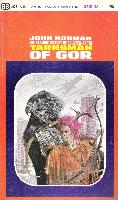
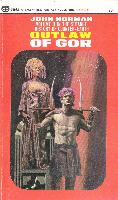
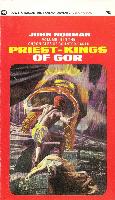
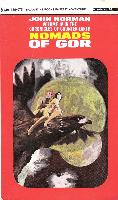
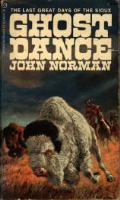
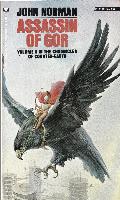
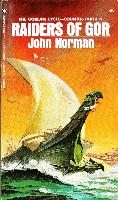
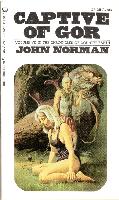
 Countdown
CountdownDuring the 1950s, the American science fiction magazine market went through a boom and bust cycle. Some 15 new magazines were launched in 1950, notably "Galaxy", "Worlds Beyond" and "Science Fantasy", adding to 110 distinct issues on the news stands at the end of the year. The boom peaked about 1953, in terms of the number of titles on the stands, when Lester del Rey counted 36 titles published for 174 total issues, which he claims "was the largest number ever reached". It clearly began to diminish in 1955, with "Planet", "Startling", and "Thrilling Wonder Stories" all ending publication and then fell off a cliff when, in June 1957, America's largest magazine distributor, American News Company, stopped operating, leaving many magazines stranded with no way to get to subway stations, railroad stations, and some other outlets. Many magazine publishers failed to be paid by American News Company for issues previously printed, and the science fiction magazine field in America continued to implode down from 13 titles and 131 issues in 1959 and 9 titles with 67 issues in 1960, again according to Lester del Rey's counts.
On the paperback markets, though, the situation was improving; in 1952, Donald A. Wollheim started as editor at Ace, and strategized the launch of a science fiction paperback line: the "Ace Doubles", while Ian Ballentine left Bantam Books and started his own publishing company Ballantine Books, with "Star Science Fiction Stories", edited by Frederik Pohl and published as Ballantine's 16th book in 1953, as their first science fiction title in hardcover and paperback. That same year, Sam Moskowitz begun the world's first college course in Science Fiction, at City College of the New York Extension School, obtaining Isaac Asimov and Robert A. Heinlein as guest lecturers.
America entered the 1960s with a young, charismatic new president, an expanding economy, and considerable hope for the future, and some publishers concluded that the presence of science fiction courses in the curricula of the nation's colleges were obvious indications that the science fiction readership had grown up and was likely to be more sophisticated in its tastes; the core group of the post-war generation had not stopped reading science fiction at eighteen, as the previous generations had, and the readership was no longer overwhelmingly male. Sf no longer stood for science fiction - now it meant speculative fiction, science fantasy, and a number of other variations all loosely bound by the indication of some connection to the fantastic. Concurrently, the genre began to be recognized in academia; colleges and universities; even high schools began offering courses in science fiction literature; they called this new breed the New Wave, and it was intended to be more daring and provocative and challenge readers to consider vicariously the state of the world and its potential future.
It was from these fertile currents that the Gorean tsunami was raised.
 Ballantine Red Book Series
Ballantine Red Book Series



 Tarnsman of Gor
Tarnsman of Gor
In December, 1966, Ballantine Books, Inc, New York released Tarnsman of Gor as Ballantine Fantasy Adventure number U6071, originally priced US 0.75 and on the back cover of this first volume of The Strange History of Counter-Earth, the US publishing company was unable to suppress its enthusiasm:
BALLANTINE BOOKS is proud to publish, for the very first time, the original account of the adventures of Tarl Cabot, sometime minor lecturer of Earth, destined to become a fiery fighting Tarnsman on the planet Gor, known also as Counter-Earth.
TARNSMAN OF GOR is a first novel - the first of a series. JOHN NORMAN, its young author, is a doctor of philosophic logic who has read little fantasy but has found that he likes to write in the GENRE because, as with many others, if frees him to explore new ideas, to relax in a world of his own creating, a world of action and high adventure, a world of courage and cruelty, of passion and alien custom.
This is the magnificent world of Gor, a planet as strangely populated, as threatening, as beautiful as any you are likely to encounter in the great works of fiction. We predict that the name of John Norman will one day be known among the best. This is the beginning. Don't miss it.
Ballantine Edition, Tarnsman of Gor, 1966
We are where the world has opened its eyes.
In Tarnsman of Gor the Counter-Earth awoke and when it did its first question was a silent who am I and its first answer was a loud confirmation of identity - I am. Tarl Cabot is John Norman's main protagonist; a silent, somewhat shy and fairly sensitive young man at the start of his twenties, in a reasonable physical shape, literate and not too dull. He has read enough history to tell the Renaissance from the Industrial Revolution, has fenced occasionally and has gone for infrequent walks, but perhaps he is too easily scared. Feeling is the important thing and Gor has come alive in action-packed emotion.
For the first time in my life I had felt full, unreasoning fear, and it had gripped me like the paws of some grotesque predatory animal. I had surrendered to it for just a moment, and it had become a force that had carried me, hurling me about as if I were a swimmer captured in surging waves - a force that could not be resisted. It had departed now. I must never surrender to it again.
The fear to lose control must come very close to the helplessness of the awakening consciousness but when the first positive identification has been made and one remembers ones own history, the second question, of course, is about the world, the outside, the reality. The problem of existence becomes more specific - where am I?
I awoke, feeling rested, and opened my eyes, half expecting to see my room in the alumni house at the college. I turned my head, without pain or discomfort. I seemed to be lying on some hard, flat object, perhaps a table, in a circular room with a low ceiling some seven feet high. There were five narrow windows, not large enough to let a man through; they rather reminded me of ports for bowmen in a castle tower, yet they admitted sufficient light to allow me to recognize my surroundings.
A brand new world has emerged, brave in its openness and filled with adventures and opportunities. The experience starts when one decides to move, begins to act, and the decision to be alive is automatically followed by a stream of perception. The world is limited in some very special way - for each decision cuts into the experience and the more one decides, the more fragmented and pulverized the world becomes. For some, rational control is all that matters; to others, the emotional experience is all there is. Being is either feeling or be felt.
The girl I had originally seen had been a slave, and what I had taken to be the jewelry at her throat had been a badge of servitude. Another such badge was a brand concealed by her clothing. The latter marked her as a slave, and the former identified her master.
And so the Gorean culture has awoken as two opposite states of consciousness; the one which is freedom, for which the being for itself is the essence, the other is dependance, for which life or being for the other is the essence; the first is the master, the latter is the slave. Both are essential - their reflection to unity is initiated within their dialog.
"You"re free, my love," I whispered. "Always free."
She sobbed, shaking her head, her lashes wet with tears.
"No," she wept. "I am your slave." She clenched her body against mine, the buckles of the wide tharlarion belt cutting into her belly. "You own me," she whispered. "Use me."
 Outlaw of Gor
Outlaw of GorUnder the influence of Robert Blanchard and Carol Inouye, who art-directed the Ballantine line during this period, Ballantine Books moved to the forefront of sf cover packaging with wonderful artwork of Gervasio Gallardo, Bob Pepper, Robert LoGrippo, Gene Szafran, Robert Foster, Alan Magee, Nick Aristovulous, Charles Moll, and others, while Donald Wollheim and Terry Carr created the famous Ace Specials, exquisitely illustrated by the team of Leo and Diane Dillon. Robert Foster, who was responsible for the covers of the first four Gor novels, also draw the cover of Frederik Pohl's collection of novelettes and short stories "The Abominable Earthman", published by Ballantine Books in 1969.

In December, 1967, the Gor series continued with Outlaw of Gor as Ballantine Fantasy Adventure U6072, US 0.75. John Norman further explored his new ideas and seemed completely relaxed within the realms of his own creation. An entire world was slowly emerging, with languages, cultures, artifacts, politics, religion, costuming, cooking, military strategies, weapons, plant life, animal life and complex social arrangements. Norman described his newly invented world with youthful flamboyancy, in rich and sparking colors, and slowly generated the foundation of the epitome of alternate universes.
The Chronicles of Tarl Cabot, once of Earth, destined to become a fighting Tarnsman of the Warrior Class on Gor.
OUTLAW OF GOR
In which Tarl Cabot, proud Warrior of Ko-ro-ba finds his home city razed, his wife and family scattered, possibly destroyed by the dreaded Flame Death of the priest gods of Sardar, and himself an outlaw.
Ballantine Edition, Outlaw of Gor, 1967
Once again, Tarl Cabot walks the green fields of Gor, after he awakens naked in the wind-swept grass, beneath that blazing star that is the common sun of his two worlds, his home planet, Earth, and its secret sister, the Counter-Earth, Gor. This time, however, he is an outlaw, a man without a city, a stranger and in Gorean the same word is used for both stranger and enemy. But the main protagonist is the city of Tharna.
In the beginning, Tharna had been much like the other Gorean cities in which women were too little regarded and enjoyed too few rights. A man who had captured a girl would place his sword to her breast and utter the ritual phrases of enslavement. They were the last words she would hear as a free woman.
Weep, Free Maiden. Remember your pride and weep. Remember your laughter and weep. Remember you were my enemy and weep. Now you are my helpless captive. Remember you stood against me.
Now you lie at my feet. I have bound you with yellow cords. I have placed you on the scarlet rug. Thus by the laws of Tharna do I claim you. Remember you were free. Know now you are my slave. Weep, Slave Girl.
Eventually this cruel practice ended and the women of Tharna became more reasonably and humanely regarded. Yet as the status of these women changed, the subtle tensions of dominance and submission, instinctual throughout the animal world, tended to assert themselves and the natural female superiorities were enlarged at the expense of those possessed by the male. And just as in our own world it is possible to condition entire populations to believe what is, from the standpoint of another population, incomprehensible and absurd, so too in Tharna both the men and the women came to believe the myths and distortions advantageous to female dominance. Thus it was, gradually and unnoticed, that the gynocracy of Tharna came to be established, and honored with the full weight of tradition and custom, those invisible bonds heavier than chains because they are not understood to exist. Men, taught to regard themselves as beasts, as inferior beings, seldom develop the full respect for themselves essential to true manhood. Women, thought to despise their men; they, too, fail to respect themselves. Hating their men, they hate themselves.
The main thesis of Outlaw is presented on a scarlet rug and tied with yellow cords: could it be that a man, to be a man, must master a woman and a woman, to be a woman must know herself mastered.
In his arms I learned what Tharna could not teach. In his arms I learned to share the flaming splendor of his passion. In his arms I learned mountains and flowers and the cry of wild tarns and the touch of a larl's claw. For the first time in my life my senses were kindled - for the first time I could feel the movements of clothing on my body, for the first time I noticed how an eye opens and what, truly, is the feel of a hand's touch - and I knew then that I was no more nor less than he or any other living creature and I loved him!
 Priest-Kings of Gor
Priest-Kings of GorThe third volume of the Gorean Cycle, Priest-Kings of Gor (Ballantine Fantasy Adventure 72015, US 0.75) was published in December, 1968, and like the first two, it was printed both in the USA and in Canada; the USA prints of the first three volumes can be recognized by the red colored 'ORIGINAL' text in the upper-right corner of the front cover, while the Canadan prints carry that text in black. On the back covers the texts 'Printed in USA' and 'Printed in Canada' appear. There exist hybrids with a USA printed cover on a Canadian book.

Tarl Cabot, Tarnsman of Gor, is determined to discover whether or not his beloved wife Talena jas in fact been destroyed by the all-powerful Priest- Kings who rule Gor with an iron and absolute discipline! None know the nature of the Priest-Kings -- whether they are alien of supermen. None have ever returned from the Mountains of Sardar where the Priest-Kings have their stronghold.
And now Tarl Cabot is on the verge of entering Sardar.
DON'T MISS THE TWO PREVIOUS VOLUMES
Ballantine Edition, Priest-Kings of Gor, 1968
After the ego and the world, John Norman uses his third novel to investigate God and religion, the last of the Kantian noumenal principles. The human mind seems to be based upon the recognition of patterns; both in space and in time. Spatial patterns form objects, temporal patterns are perceived as causality, fate or chance; after the who and where am I, the third most important question is why - an inquiry into the teleological foundation of reality. And therefor Tarl Cabot goes hunting for the Gorean Gods themselves.
It is said that neither the physical intricacies of the cosmos nor the emotions of human beings are beyond the scope of their power, that the feelings of men and the motions of atoms and stars are as one to them, that they can control the very forces of gravity and invisibly sway the hearts of human beings, but of this latter claim I wonder, for once on a road to Ko-ro- ba, my city, I met one who had been a messenger of Priest-Kings, one who had been capable of disobeying them, one from the shards of whose burnt and blasted skull I had removed a handful of golden wire.
But just like the classic Greek mythologies, in Priest-Kings of Gor even the Gods are anthropomorphic, perhaps not in outward appearance, but surely in their conduct and motivation, and their future is dangerously uncertain.
"Your world is dying," I said to Misk.
"The universe itself will die," said Misk.
He had his antennae lifted to the white fires that burned in the black night over Gor.
I surmised he was speaking of those entopic regularities that apparently prevailed in reality, as we know it, the loss of energy, its transformation into the ashes of the stellar night.
"It will grow cold and dark," said Misk.
I looked up at him.
"But in the end," said he, "life is as real as death and there will be a return of the ultimate rhythms, and a new explosion will cast forth the primitive particles and we shall have another turn of the wheel, and some day, sometime, in eons which defy the calculations even of Priest-Kings, there may be another nest, and another Earth, and Gor, and another Misk and another Tarl Cabot to stand upon a windy hill in the moonlight and speak of strange things."
Misk's antennae looked down at me.
"Perhaps," he said, "we have stood here, on this hill, thusly together, unknown to either of us, already an infinite number of times."
The wind seemed now very cold and very swift.
"And what did we do?" I asked.
"I do not know what we did," said Misk. "But I think I would now choose to do that action which I would be willing that I should do again and again with each turning of the wheel. I would choose so to live that I might be willing that I should live that life a thousand times, even forever. I would choose to live that I might stand boldly with my deed without regret throughout eternity."
 Nomads of Gor
Nomads of GorThen John Norman speeds up a little, an effort aimed to the publication of a separated novel. In October, 1969, Nomads of Gor (Ballantine Fantasy Adventure 01765) is released to the American and Canadian public.

Far South of the Sardar Mountains Tarl Cabot pursues his mission for the Priest-Kings of Gor. He must find their last precious link to survival.
All Tarl knows it that it is hidden somewhere among the rooming hordes of the savage Wagon People and that he might well be inviting death to ask for it directly.
Ballantine Edition, Nomads of Gor, 1969
In January, 1970, the first reprints of the previous volumes are released: the second printings of Tarnsman of Gor, Outlaw of Gor and Priest-Kings of Gor use the same Robert Foster artwork as the first printings, but the cover-design is slightly changed, showing a black bar in the right upper corner, similar as the first printing of Nomads of Gor.
The human race is separated by gender. Roughly half of us are male and the other half, an unimaginable four billion people, are female.
According to John Norman, there might be a general disposition in females to be more receptive to dominance than males, and we are not sames. Many women respond to strength and force. They like it. They want it. Most women want a man capable of mastering them. He suspects that the matter is biological, and that this does lie somewhere within all women. One supposes that there is a man and a situation in which any woman could be mastered and would respond as a loving slave. That's a broad statement. To be sure, it is a universal hypothesis of a semantically nonfinite scope, so it is not the sort of thing which could be conclusively tested. But even if it is not a disposition in all women, it is obviously a disposition in a great many of them, in his view the overwhelming majority of women.
She lay on her back, her eyes open, looking at the top of the wagon, at the hangings, the shadows thrown on the scarlet hides by the light of the fire bowl.
"I am free," she said.
I looked at her.
She rolled over on her elbows. "It is strange," she said. "I am a slave girl. But I am free. I am free."
"I must sleep," I said, rolling over.
She kissed me on the shoulder. "Thank you," she said, "Tarl Cabot, for freeing me."
The core of the emotional content of Counter-Earth is the eternal fountain of youth, the magic glue of the human pair bond, the highest of feminine ideals, and perhaps, the scariest and the strongest of masculine drives; the one thing that defies all rationality - love.
Love and her children; romance, fulfillment, joy, laughter and forgiveness, are essential elements of every human culture and every human community. Without love men and women alike become lonely souls that drift through barren, desolate plains.
Our greatest strength is our ability to care, and be cared for. Without love, masters and slaves are merely nomads.
TO BE CONTINUED
 Afterword
AfterwordThe first version of this article was written in September, 2001, and first published on January 1st, 2002, as Feature Article, by The Gorean Voice. It was slightly edited and enhanced in 2008, and again in 2009, scheduled to be published at the Chronicles of Gor, in July, 2010. We never got around to it, and in September, 2012, due to internal problems, the publication was cancelled.
For this enhanced version, I improved the layout, added a table of contents, added new cover images, turned them into links, and added this afterword.
"The Start of the Series" was written by Simon van Meygaarden,
and first published in The Gorean Voice - January 2002 - Vol IV Issue 7 - #43,
under copyright ® 2001 by The Gorean Group, Inc.
This enhanced and updated version was created in August, 2012.
Copyright ® 2001/2012 by Simon van Meygaarden. All Rights Reserved.
 This page is copyright © 2000/2013 by Simon van Meygaarden & Jon Ard - All Rights Reserved
This page is copyright © 2000/2013 by Simon van Meygaarden & Jon Ard - All Rights Reserved